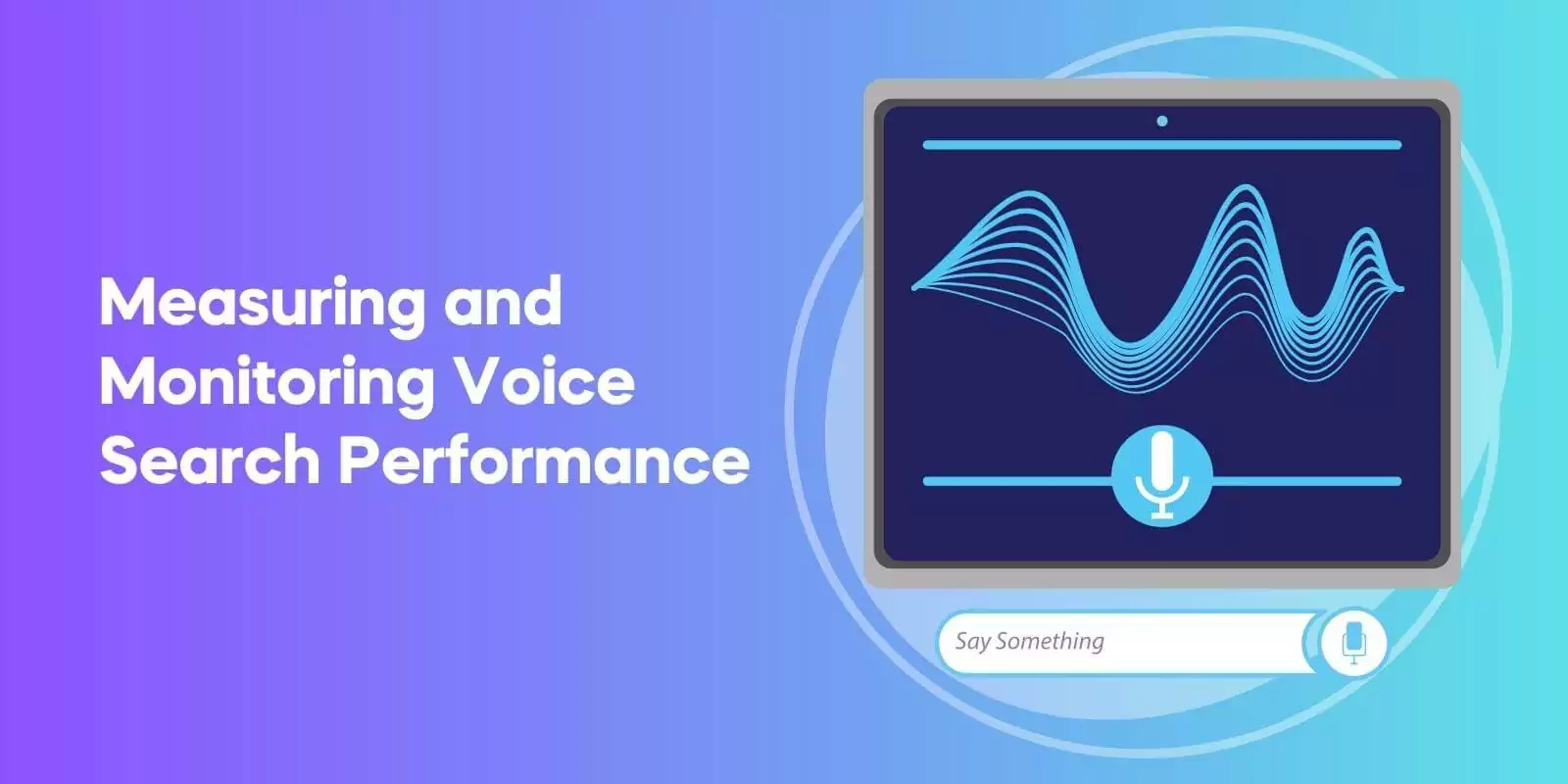In this action-packed blog post, we’ll delve into the growing popularity of voice assistants, understand the unique characteristics of voice search queries, and learn essential strategies for optimizing websites for voice search.
Plus, we’ll cover the technical considerations for voice search optimization and discuss emerging trends that will shape the future of voice search. Are you pumped up yet? Let’s dive in!
The Rise of Voice Assistants
Imagine a world where you can access information and get instant answers just by speaking. Welcome to the world of voice search!
With the increasing adoption of voice assistants like Siri, Alexa, and Google Assistant, search behavior is undergoing a massive transformation.
The convenience and immediacy of voice search results have made it a game-changer in digital marketing, and businesses must adapt to stay relevant.
Voice search optimization is an important element to consider when optimizing a website. It focuses on addressing common queries included in content, helping voice search technologies correctly display your page to users in the search results.
From “near me” searches to quick and immediate results, voice search is revolutionizing how users search and interact with the web.
But how do you stay ahead in this ever-evolving landscape? Let’s explore the adoption and usage trends, as well as the voice assistant platforms shaping this dynamic space.
Adoption and Usage Trends
I bet you didn’t know that around 40% of all internet users in the USA utilize voice assistant services at least once a month.
Most of these interactions are carried out through either smartphones or smart speakers. That’s right! The convenience of faster search results and the ability to access voice search on-the-go are some of the main reasons behind this growing phenomenon.
In fact, 56% of all voice searches are made on smartphones.
The forecast for the rise of voice search is nearly quantum, with the number of smart speakers in the U.S. alone expected to surpass 200 million.
As more and more people embrace voice search, it’s crucial for businesses to understand the trends and preferences of voice search users to stay ahead in the game.
Let’s take a closer look at the voice assistant platforms making waves in the market.
Voice Assistant Platforms
When it comes to voice assistant platforms, the major players are Alexa, Siri, and Google Assistant. Each platform has its unique characteristics and draws information from different search engines.
For instance, Alexa is programmed to draw its information from Bing. As a business, it’s essential to optimize for all these platforms to reach a broader target audience.
Understanding the differences between these platforms and their search results preferences is crucial for voice search optimization.
Creating content that caters to the specific requirements of each platform will ensure that your website ranks well in voice search results across various voice assistants.
Now that we’ve got a grasp on voice assistant platforms, let’s dive deeper into the unique characteristics of voice search queries.
Understanding Voice Search Queries
Voice search queries are a different beast compared to traditional text searches. The search strings used for text-based searches are usually short and concise.
However, they may need to be longer when a more specific result is desired. Descriptive words or phrases that are uncommonly used may also be included. Voice searches are conducted in certain scenarios.
For example, when someone is driving or doing a chore at home. This shows that the context within which the user is conducting the search has an impact on how they may phrase their query. The results must be relevant to the user. This includes their location, situation and needs.
To optimize for voice search, it’s crucial to understand the conversational tone and long-tail keywords that users employ, as well as the context and user intent behind these queries.
Let’s delve deeper into these aspects and learn how to create content that addresses the unique characteristics of voice search queries.
Conversational Tone and Long-Tail Keywords
Since voice searches tend to be more conversational in nature, it’s essential to create content using a conversational tone and long-tail keywords.
Long-tail keywords are phrases containing three or more words. They are essential for implementing effective keyword optimization strategies. They are incredibly important for voice search optimization because people tend to ask complete questions when using voice search devices.
By incorporating question words like “how,” “what,” “where,” “when” and “why” into your content, you can better address the conversational nature of voice search queries. Including filler words like “I, the, of the, on the, to, for,” etc., can also enhance your content’s relevance to voice search queries.
Context and User Intent
Understanding the context of a voice search query is absolutely essential, as it helps virtual assistants comprehend the user’s intent and provide more precise results.
AI advancements, like natural language processing, allow virtual assistants to analyze the semantics and manage the dialogue strategy, leading to more personalized and conversational interactions with users.
To optimize your content for voice search, it’s crucial to understand the searcher’s intent and create content that addresses their needs and preferences.
Analyzing the four main categories of user intent according to Google – informational, navigational, actional, and transactional – can help businesses anticipate the query style that people use while using voice search.
Key Strategies for Voice Search Optimization
Now that we’ve explored the unique characteristics of voice search queries and the importance of understanding user intent, it’s time to dive into some essential strategies for optimizing your website for voice search.
From optimizing content for conversational queries to enhancing local SEO and leveraging structured data, these strategies will help you stay ahead in the voice search game.
Remember, the goal of voice search optimization is to make your content easily accessible and relevant to users who conduct voice searches.

Award-Winning
Sales Funnel & Website Expert
Discover How My Agency Can Grow Your Business
- Website: Our websites are the perfect blend of form and function.
- Sales Funnel: We build sales funnels that turn leads into customers.
- SEO: Get found online with our expert SEO services.
By implementing these key strategies, you’ll not only improve your website’s visibility in voice search results, but also create a better overall user experience for your audience.
Optimizing Content for Conversational Queries
To optimize your content for voice search, it’s crucial to address conversational queries and match user intent.
This involves creating content that answers common questions or provides quick and direct information that users are looking for. Using a simple question-and-answer style format for headings and crafting content around long-tail keywords can greatly enhance your website’s visibility in voice search results.
Another effective strategy is to create a webpage with a headline that covers the most common question and provides a detailed answer or definition to the keyword.
This will help your content rank higher in voice search results, increasing the chances of being featured in snippets or People Also Ask boxes.
Enhancing Local SEO for Voice Search
Local SEO plays a significant role in voice search optimization, as many voice search queries have local intent.
To capture “near me” searches and other location-based queries, it’s crucial to optimize your website for local SEO.
Creating and maintaining a Google Business Profile, for instance, can help you rank for “near me” searches and ensure your business is visible to users searching for relevant products or services in your area.
Another strategy for enhancing local SEO is targeting local keywords and tailoring your website’s content to accommodate simple but precise searches. Enabling a user’s location can be beneficial to provide better search results.
For example, it can provide accuracy for queries like “Find an Italian restaurant nearby.” By focusing on local SEO, you can increase your website’s visibility in local voice search results and attract more customers.
Leveraging Structured Data and Schema Markup
Structured data and schema markup are powerful tools for enhancing your website’s visibility in voice search results.
Structured data is a way to embed information about your website so that search engines can understand it, while schema markup is a type of structured data that helps search engines provide more detailed results.
Implementing schema markup on your website can improve the chances of appearing in featured snippets or People Also Ask boxes, which are often displayed in voice search results.
By leveraging structured data and schema markup, you can help search engines better understand your content and provide more accurate results to users conducting voice searches.
Technical Considerations for Voice Search Optimization
Technical factors play a crucial role in voice search optimization. From mobile-friendliness to site speed and performance, addressing these technical considerations can significantly impact your website’s voice search rankings.
Let’s explore the importance of mobile-friendliness and site speed in voice search optimization. By focusing on the technical aspects of voice search optimization, you’ll not only improve your website’s visibility in voice search results, but also ensure a seamless and enjoyable user experience for your audience.
So let’s dive into the technical considerations that can make or break your voice search optimization efforts.
Mobile-Friendliness
Mobile-friendliness is a critical factor in voice search optimization, as most voice searches are conducted on mobile devices.
In fact, over half of all global internet traffic comes from mobile devices, and an incredible 27% of mobile users are using voice search on their smartphones.
Having a mobile-friendly website not only ensures that your content is easily accessible to users on various devices, but also plays a vital role in your website’s voice search rankings.
By optimizing your website for mobile, you’ll stay ahead of the game and provide a superior user experience to your audience.
Site Speed and Performance
Site speed is another important factor that affects voice search rankings. A slow-loading website can lead to a poor user experience, which can negatively impact your voice search rankings.
To optimize your site speed and performance, consider minimizing HTTP requests, optimizing images, and using a content delivery network (CDN).
By focusing on improving your website’s speed and performance, you’ll not only enhance your voice search rankings, but also create a better overall user experience for your audience.
Remember, a fast-loading website is crucial to keeping users engaged and ensuring they find the information they need quickly and effortlessly.
Measuring and Monitoring Voice Search Performance
Measuring and monitoring voice search performance is vital to identify voice search traffic, track voice search rankings, and stay ahead of future voice search trends.
By tracking and analyzing your website’s performance in voice search, you can identify areas for improvement and make data-driven decisions to optimize your website for voice search.
In this section, we’ll explore how to identify voice search traffic and track voice search rankings, providing you with the tools and guidance needed to measure and monitor your website’s voice search performance.
Identifying Voice Search Traffic
To identify voice search traffic, you can analyze search queries for localized and long-tail keywords, as well as the ranking featured snippet.
Additionally, conducting a voice search SEO audit and updating your Google My Business profile can be really helpful in identifying voice search traffic.
By distinguishing voice search traffic from regular search traffic in analytics tools, you can better understand the preferences and behaviors of your voice search users.
This information will be invaluable in guiding your voice search optimization efforts and creating content that resonates with your target audience.
Tracking Voice Search Rankings
Monitoring your voice search rankings is essential to identify areas for improvement and stay ahead of the competition. To track voice search rankings, you can use fantastic tools such as Google Search Console and third-party tools such as Moz or Ahrefs.
By keeping a close eye on your voice search rankings, you can quickly identify and address any issues that may be affecting your website’s visibility in voice search results.
Regular monitoring will also help you stay up-to-date with the latest voice search trends and best practices, ensuring your website remains optimized for voice search at all times.
Adapting to Future Voice Search Trends
As voice search continues to evolve, it’s crucial for businesses to adapt to emerging trends and stay ahead of the curve.
From the integration of smart home devices to the impact of artificial intelligence on voice search, these trends will shape the future of voice search and influence the way users interact with the web.
In this section, we’ll explore some of the most exciting trends in voice search and discuss their implications for SEO strategies.
By staying informed and adapting to these trends, businesses can ensure their websites remain optimized for voice search and continue to provide a superior user experience.
Integration with Smart Home Devices
Smart home devices are becoming increasingly popular, and their growing role in voice search cannot be ignored. These devices make it easy and convenient to access voice search, allowing users to control various aspects of their home environment.
As more people embrace voice search through smart home devices, businesses must adapt their optimization efforts accordingly.
By optimizing your website for voice search on smart home devices, you’ll not only improve your visibility in voice search results, but also cater to a rapidly growing segment of voice search users.
Staying ahead of this trend will be essential for businesses looking to maintain a competitive edge in the voice search market.
Impact of Artificial Intelligence on Voice Search
Artificial intelligence advancements, such as natural language processing, will continue to shape voice search algorithms and user experiences.
AI enables virtual assistants to comprehend user queries more accurately and provide precise results, leading to enhanced user experiences as users find the information they need more swiftly and effortlessly.
As AI continues to revolutionize voice search, businesses must stay informed and adapt their optimization strategies accordingly.
By staying ahead of AI advancements and their impact on voice search, businesses can ensure their websites remain optimized and provide an exceptional user experience for their audience.
Frequently Asked Questions
What is voice search in SEO?
Voice search in SEO refers to the practice of optimizing a website’s content, structure, and metadata to improve its visibility and ranking in search engine results that are generated from voice-activated queries.
With the rise of smart devices and voice assistants like Google Assistant, Siri, and Amazon’s Alexa, individuals are increasingly using voice commands to conduct online searches. Instead of typing queries into a search bar, users speak their questions or commands directly into their device, which then uses a search engine to find the most relevant results.
This natural, conversational approach to searching the web has implications for SEO strategies, as voice search queries often differ from traditional typed searches in their length and complexity.
Does voice search impact SEO?
Yes, voice search significantly impacts SEO. This is because voice searches typically involve longer, more conversational queries compared to traditional text-based searches. Voice search queries often take the form of full sentences or questions, which means websites need to optimize their content to match this conversational style.
This shift necessitates a focus on long-tail keywords and phrases that more closely align with the natural language used in spoken queries. Furthermore, since many voice searches are local in nature (such as “where is the nearest coffee shop?”), local SEO is also significantly affected by the rise of voice search.
How do I optimize SEO for voice search?
There are several strategies for optimizing SEO for voice search:
- Use long-tail keywords: Since voice searches are more conversational and often longer than text searches, incorporating long-tail keywords that match these types of queries can improve your site’s ranking.
- Improve website speed: Speed is critical for all types of SEO, but it’s especially crucial for voice search. Users expect quick responses from their voice assistants, so pages that load quickly will be favored.
- Optimize for mobile: Many voice searches occur on mobile devices, so ensure your site is mobile-friendly.
- Use structured data: Structured data helps search engines understand your content and can improve your visibility in search results.
- Create a FAQ page: FAQ pages are a great way to incorporate natural language and question-based content that aligns well with voice search queries.
What are the keywords for voice search?
Keywords for voice search are typically long-tail keywords that reflect the more conversational nature of voice queries. They often take the form of full sentences or questions.
For example, while a user might type “weather NYC” into a search engine, they would ask their voice assistant, “What’s the weather in New York City today?” So, a long-tail keyword for this voice search might be “weather in New York City today.”
What is an example of voice search marketing?
Voice search marketing involves optimizing your brand’s online presence for voice search queries. For example, a local restaurant might optimize their website for voice search queries like “What’s the best Italian restaurant near me?” or “Italian restaurants open now.”
This could involve ensuring their site is mobile-friendly (since many voice searches occur on mobile devices), using these long-tail keywords in their site content, and maintaining updated local listings so the restaurant’s location and hours are readily available to voice search devices.
How much of Google search is voice?
Voice search has become an increasingly popular method of querying the internet for various reasons. The following statistics provide a detailed view of the usage of voice search:
- 24% of U.S. adults own a smart speaker, and among these smart speaker users, 47% own one device, 24% own two devices, and 29% own three devices.
- 20% of smart speakers and smartphone owners use their devices’ voice assistant “several times per day.”
- Notably, 71% of consumers expressed a preference for using voice search to search for something online instead of physically searching for it.
- Younger individuals (aged 18-24) are adopting voice technology faster than older groups, and adults aged 25-49 are more likely to be considered “heavy users” of voice search technology.
- Only 10% of people are unfamiliar with voice-enabled devices, suggesting a high level of awareness and adoption of this technology.
- Voice search is not limited to smart speakers and smartphones. 24% of people have voice-search-enabled TVs or TV remotes, 23% of people have voice search in their cars, 21% of people have voice search on their computers, 19% of people have voice search on their tablets, and 9% of people have voice-search-enabled household appliances.
However, it’s worth noting that concerns about privacy and data security remain significant for some users, with 28% of people expressing concerns about smart speaker privacy and data security.
Despite these concerns, the trend shows a clear movement towards more voice search usage. This aligns with the convenience and hands-free nature of voice search, allowing users to multitask or perform searches when their hands are occupied.
As for Google specifically, more than 20% of the searches in the Google App are done using voice search.
Conclusion
We’ve come a long way on our voice search optimization journey! From understanding the rise of voice assistants and unique characteristics of voice search queries to exploring essential strategies and technical considerations for optimization, we’ve covered the ins and outs of voice search optimization.
As voice search continues to evolve, it’s crucial for businesses to stay ahead of emerging trends and adapt their optimization efforts accordingly.
By focusing on conversational language, long-tail keywords, local SEO, and technical considerations, businesses can ensure their websites remain optimized for voice search and provide a superior user experience.
So, are you ready to conquer the world of voice search optimization?












